#9 September 1850
Text







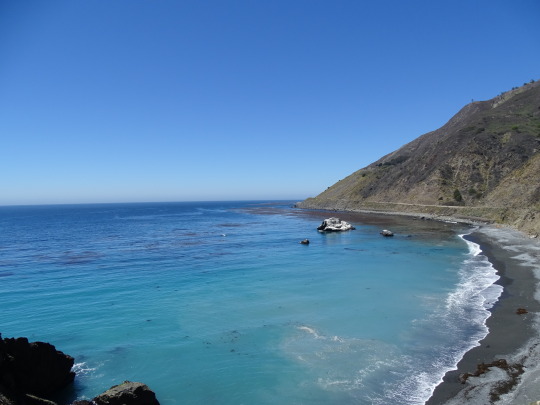

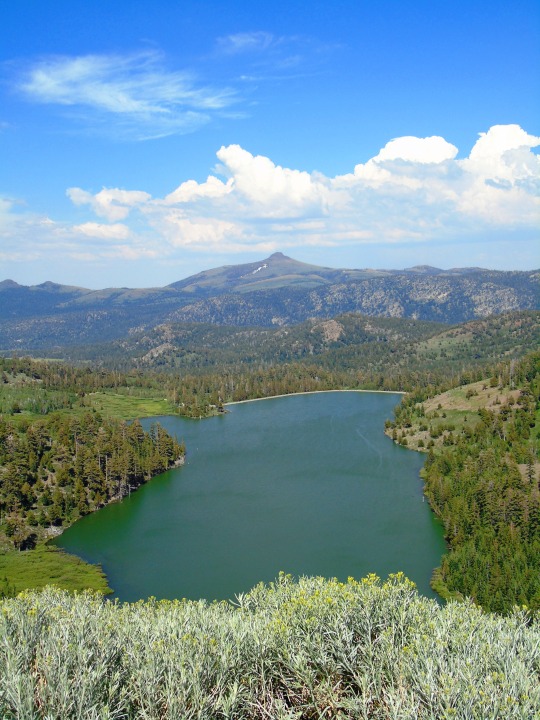
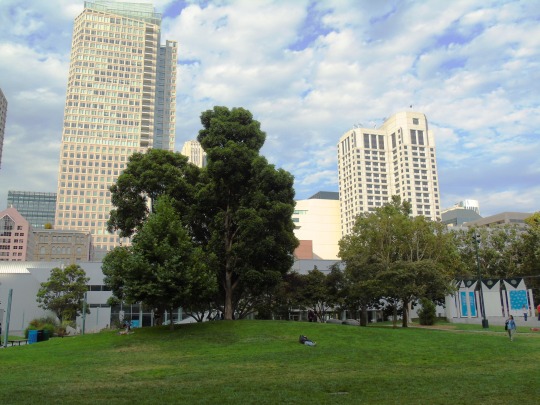
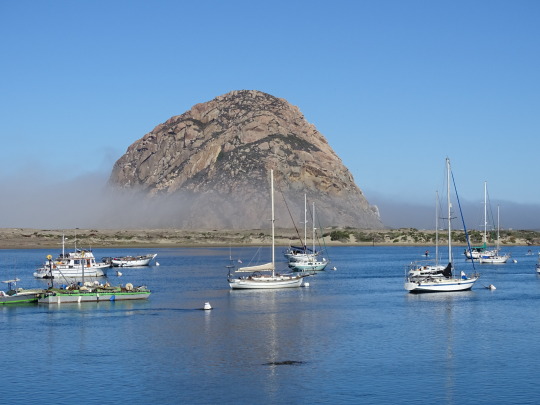







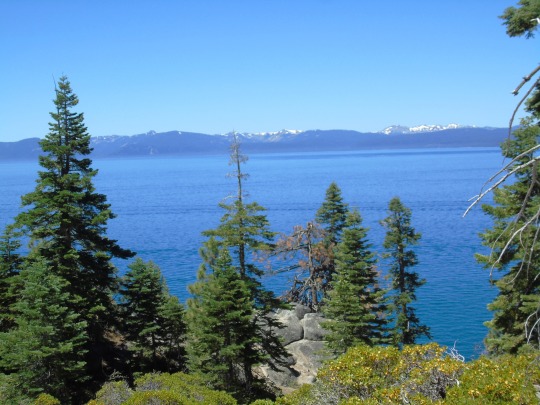

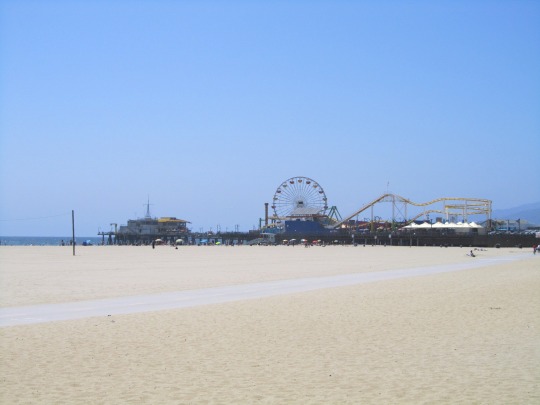

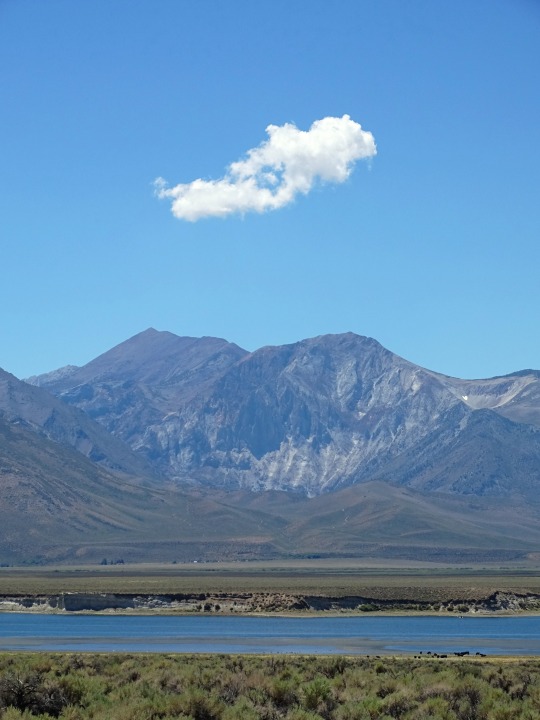
California was admitted as the thirty-first U.S. state on September 9, 1850.
California Admission Day
California Admission Day is observed on September 9 each year. It commemorates the day California was admitted into the Union as the 31st state in 1850 after it was ceded to the United States by Mexico in 1848. California became one of the few states to become a state without first being an organized territory. California Admission Day is not a federal holiday. Rather, it’s a local observance in the state, which implies that businesses, schools, and government offices remain open. In times gone by it was celebrated with great pomp and ceremony with parades and pageantry. Though low-key now, the day still marks an important part of Californian history.
History of California Admission Day
The Mexican-American War began in May 1846 when the U.S. declared war on Mexico. American settlers who lived in the territory of California in Mexico revolted against the Mexican government in what is known as the Bear Flag Revolt. The Americans captured Sonoma, hoisted a Bear Flag in the area, and declared it the California Republic. On July 9, 1846, Navy Lieutenant Joseph Warren Revere arrived in Sonoma and replaced the Bear Flag in the territory with a United States flag. Lieutenant Revere officially declared California a possession of the United States. In February 1848, Mexico and the U.S. signed the Treaty of Guadalupe Hidalgo to end the war. This treaty meant that Mexico had to yield a large portion of its Southwest territory — including present-day California — to the U.S.
As of the signing of the treaty, California had a meager population that was not up to the 60,000-inhabitant benchmark a territory needed to achieve statehood. Earlier in January 1848, gold was discovered on the American River near Sacramento, and the territory witnessed a massive influx of immigrants looking for work and good fortune. Thanks to the Gold Rush, a huge increase in population and wealth followed, thus necessitating the need for civil government and local policies.
In 1849, Californians demanded statehood, and California became the 31st state on September 9, 1850. California joined the Union as a free, non-slavery state by the Compromise of 1850 in just about two years of the territory’s incorporation. Its first capital was in San Jose before it was moved to the city of Vallejo for lack of necessary facilities. The capital was later moved to Benicia, a small town, and subsequently to the riverside port of Sacramento in 1854.
California Admission Day timeline
1846
The Bear Flag Revolt
American settlers in California stage a revolt against Mexican authorities.
1848
A Treaty for Peace
The United States and Mexico sign the Treaty of Guadalupe Hidalgo to end the war between the countries.
1850
The Compromise of 1850
The Compromise of 1850 is signed and California is admitted as the 31st state to the Union.
1911
Adoption of the California State Flag
The California State Flag, based on the original Bear Flag, is adopted by the state legislature.
California Admission Day FAQs
Is California Admission Day a federal holiday?
California Admission Day is not a federal holiday. It’s a local observance in the state of California. Schools, businesses, and government offices remain open.
What are other names for California?
California is also known as ‘The Golden State, ‘The Land of Milk and Honey,’ ‘The El Dorado State,’ and ‘The Grape State.’
What is California famous for?
California remains one of the most popular destinations throughout North America. The state is especially famous for Hollywood, Disneyland, and the Golden Gate Bridge. Other unique landmarks in California include Coachella, Silicon Valley, the Wine Country, and Surf Culture.
California Admission Day Activities
Visit the Golden StateIf you’re a history buff, today’s the perfect day to visit California. Museums around California offer various resources and artifacts to help you learn more about the state’s rich history. Take a day trip or make a holiday of it and travel to more than one.
Enjoy the special eventsCalifornia Admission Day is observed with special events at schools, museums, and organizations throughout the state. Public officials often grant special addresses about its history and significance.
Take a trip to SonomaCalifornia Admission Day has been observed particularly in the Sonoma area since 1850. It would be nice to visit the area where it all began. Don’t forget to enjoy the state’s beautiful beaches, valleys, and mountains as you celebrate with them!
5 Fun Facts About California
Originally named “the Grizzly Bear State": California has renamed the Golden State from its initial name “the Grizzly Bear State” as the bears went extinct.
The state motto is ‘Eureka!’: The Greek word means “I have found it!” and alludes to the discovery of gold in the Sierra Nevada.
Redwood is the official state tree: California’s official state tree is the redwood, as designated in 1937.
It’s called ‘The Grape State’, too: Over 300,000 tons of grapes are grown in California annually, and the state produces more than 17 million gallons of wine each year!
Blue jeans: In 1873 blue jeans were imported for miners from Europe, making San Francisco the first place in the U.S. where jeans were worn.
Why We Love California Admission Day
Becoming a recognized state in the U.S.This event celebrates the day California officially became a state in the U.S. It was a protracted struggle but thanks to the peace treaty that ended the Mexican-American War of 1848, it was a done deal.
A tribute to the war heroesThe struggle to acquire California as a possession of the U.S. was not an easy one. It took a war, diplomacy, protests, and legislation to make it possible. This day celebrates the memories of everyone who fought to make it possible.
The population boost that came with the Gold RushCalifornia’s low population would have hindered its prospects to become a state and admittance to the Union. Thanks to the Gold Rush, the territory was able to have the 60,000 inhabitants it needed to achieve statehood.
#Mount Shasta#California#31st US State#9 September 1850#Pacific Ocean#San Francisco#Sierra Nevada#Yosemite National Park#Morro Bay#Sonoma#Big Sur#San Diego#Humboldt Redwoods State Park#Los Angeles#Napa Valley#Death Valley National Park#travel#original photography#vacation#tourist attraction#landmark#architecture#cityscape#landscape#USA#Lake Tahoe#Santa Monica#Santa Barbara#anniversary#US history
24 notes
·
View notes
Text
Crystal Palace Field Trip Part 1: Walking With Victorian Monsters

The Crystal Palace Dinosaurs take their name from the original Crystal Palace, a glass-paned exhibition building originally constructed for a World's Fair in Hyde Park in 1851.
In 1854 the structure was relocated 14km (~9 miles) south to the newly-created Crystal Palace Park, and a collection of over 30 life-sized statues of prehistoric animals were commissioned to accompany the reopening – creating a sort of Victorian dinosaur theme park – sculpted by Benjamin Waterhouse Hawkins with consultation from paleontologist Sir Richard Owen.
The Palace building itself burned down completely in 1936, and today only the ruins of its terraces remain in the northeast of the park grounds.

The Crystal Palace building then and now
Left image circa 1854 (public domain)
Right image circa 2011 by Mark Ahsmann (CC BY-SA 3.0)
Six sphinx statues based on the Great Sphinx of Tanis also survive up among the Palace ruins, flanking some of the terrace staircases. They fell into serious disrepair during the latter half of the 20th century, but in 2017 they all finally got some much-needed preservation work, repairing them and restoring their original Victorian red paint jobs.

———
…But let's get to what we're really here for. Dinosaurs! (…And assorted other prehistoric beasties!)
The "Dinosaur Court" down in the south end of the park still remains to this day, displayed across several islands in a man-made lake. Over the decades they've been through multiple cycles of neglect and renovation, and are currently cared for by the London Borough of Bromley (Crystal Palace Park Trust are due to take over custodial duties in September 2023), with promotion and fundraising assistance from organizations like Historic England and the Friends of the Crystal Palace Dinosaurs charity.
Just about 170 years old now, the Crystal Palace Dinosaurs represent fifteen different types of fossil creatures known to 1850s Victorian science, with only three actual dinosaur species featured. Although often derided for being outdated and very inaccurate by modern standards, they were actually incredibly good efforts at the time, especially taking into account that the field of paleontology was still in its very early days.
They also just have a lot of charm, with toothy grins and surprisingly dynamic poses.
Unfortunately on the day I visited in early August 2023 most of the statues were heavily obscured by plant growth, both on their islands and on the sides of the paths they can usually be viewed from. Since I'd seen images from about a month ago showing things being less overgrown, this was probably just some unlucky timing on my part coinciding with some explosive summer foliage growth.

The first island on the trail features a few Permian and Triassic animals which were only known from fragmentary remains in the 1850s. These "labyrinthodonts" were recognized as having similarities to both amphibians and reptiles, and so were depicted with boxy toothy jaws, warty skin, stumpy tails, and long frog-like back legs.

Today we'd call these particular animals temnospondyl amphibians, specifically Mastodonsaurus, and we know they were actually shaped more like giant salamanders with longer flatter crocodilian-like jaws, smaller legs, and long paddle-like tails.

———

Somewhere in the foliage beyond this specific "labyrinthodont" there was also supposed to be a pair of dicynodonts, but I couldn't see much of them at all and didn't manage to get a remotely visible photograph.

Crystal Palace Dicynodon when much less overgrown
Left photo by London looks (CC BY 2.0)
Right photo by Loz Pycock (CC BY SA 2.0)
These Dicynodon are depicted as looking like sabre-toothed turtles complete with shells. That was fairly speculative even for the time, but considering only their weird turtle-beaked-and-walrus-tusked skulls were known it was probably the best guess Hawkins and Owen had. Today we know these animals were actually synapsids related to modern mammals, but Victorian understanding considered them to be a type of reptile.
Modern reconstructions of dicynodonts have a slightly different face shape, along with squat pig-like bodies and semi-sprawling limbs. They may have had fur, but currently the only known actual skin impressions from the genus Lystrosaurus show leathery bumpy hairless skin.

———
Next time: the Jurassic and Cretaceous sculptures!
#field trip!#crystal palace dinosaurs#retrosaurs#i love them your honor#crystal palace park#crystal palace#labyrinthodont#temnospondyl#mastodonsaurus#dicynodont#dicynodon#synapsid#paleontology#vintage paleoart#art
376 notes
·
View notes
Text
A Young Person's Introduction to Late 19th-Century Western Fashion
hello fellow youths
General information
Banner, Bernadette. "Exposing Victorian Influencers Who 'Facetuned' Their Photos. (Photo Manipulation was EVERYWHERE)." YouTube. July 17, 2021.
English Heritage. "Fashion Through History: Episode 1 – Victorians." YouTube. February 9, 2023.
Lady Rebecca Fashions. "100 Years of Fashion // The Fashionable Plus Size Silhouette from 1820-1910." YouTube. June 5, 2021.
Victoria and Albert Museum. "100 Years of Fashionable Womenswear: 1830s – 1930s | V&A." YouTube. July 18, 2023.
Zebrowska, Karolina. "Victorian Fashion Is Not What You Think It Is." YouTube. March 19, 2019.
Accessories
Banner, Bernadette. ""Afro-Victorian": Bringing Historical Black Women's Dress into the 21st Century w Cheyney McKnight." YouTube. October 20, 2021.
Cox, Abby. "A Fashion Historian Explains the History of the Handbag." YouTube. January 26, 2023.
Rudolph, Nicole. "Dangerous Things in Victorian Pockets : Mens Pocket History." YouTube. March 2, 2024.
Rudolph, Nicole. "The Controversial History of Color Season Analysis." YouTube. November 4, 2023.
Zebrowska, Karolina. "Disgusting and Creepy Victorian Fashion Trends." YouTube. October 17, 2018.
Bustles and hoopskirts
Donner, Morgan. "Weirdest Victorian Invention: The Bustle-Chair (and we made one)." YouTube. November 20, 2020.
Lady Rebecca Fashions. "100 Years of Underwear // The Changing Plus Size Shape from Regency to Victorian to Edwardian." YouTube. May 1, 2021.
Lady Rebecca Fashions. "All About Bustles! A Deep Dive into 1870s Fashions." YouTube. December 26, 2023.
Rudolph, Nicole. "Why were Victorian Hips Controversial?" YouTube. September 12, 2021.
Cosmetics
Birchwood, Vasi. "1800s Makeup Is Not What You Think." YouTube. July 21, 2023.
English Heritage. "Queen Victoria Makeup Tutorial | History Inspired | Feat. Amber Butchart and Rebecca Butterworth." YouTube. May 20, 2019.
Zebrowska, Karolina. "I Used Only Victorian Cosmetics For a Week." YouTube. July 26, 2023.
Fabrics
Rudolph, Nicole. "Did Silk Spontaneously Combust in the Victorian Era?" YouTube. August 8, 2021.
Rudolph, Nicole. "The History of Elastic." YouTube. July 4, 2021.
Rudolph, Nicole. "The Truth About Arsenic in the Victorian Era." YouTube. January 24, 2021.
Gowns
Bullat, Samantha. "Dress Historian Analyzes Victorian Mourning Clothing of the Mid-19th Century." YouTube. March 14, 2021.
Lady Rebecca Fashions. "All About 1860's Fashion // What did Civil War-era fashion look like?" YouTube. November 12, 2022.
Lady Rebecca Fashions. "How did fashion evolve from 1850-1859? // 1850's Fashion Deep Dive." YouTube. October 1, 2022.
Rudolph, Nicole. "Victorian Fast Fashion? The Truth about the History of Disposable Clothing." YouTube. February 6, 2022.
SnappyDragon. "Were the Pre-Raphaelites painting accurate medieval dress . . . or Victorian fairtytalecore?" YouTube. April 26, 2024.
Zebrowska, Karolina. "19th Century Fashion - How To Tell Different Decades Apart?" YouTube. November 17, 2017.
Hair care and styling
Banner, Bernadette. "Following a Victorian Home Made Hair Care Routine (1889)." YouTube. September 11, 2021.
Lady Rebecca Fashions. "Getting Dressed in an 1888 Daisy Costume // Easy Bustle-Era Hair Tutorial." YouTube. November 13, 2020.
Lady Rebecca Fashions. "Getting Dressed in the 1870s & 1874 Hairstyle Tutorial." YouTube. February 23, 2020.
Rudolph, Nicole. "Why did Victorian Women Cut their Hair Short?" YouTube. December 18, 2022.
Laundry and housekeeping
English Heritage. "A Tour of the Laundry - The Victorian Way." YouTube. September 6, 2019.
English Heritage. "How to Wash Up - The Victorian Way." YouTube. March 18, 2021.
English Heritage. "Laying the Table at Christmas – The Victorian Way." YouTube. December 14, 2022.
Walkley, Christina, and Vanda Foster. Crinolines and Crimping Irons: Victorian Clothes: How They Were Cleaned and Cared for. Peter Owen Limited: London, 1978.
Outerwear and working wear
Birchwood, Vasi. "What Irish Working Women Wore in the Late 19th Century | I Made the Clothing of My Irish Ancestors." YouTube. June 23, 2023.
English Heritage. "The Real Mrs Crocombe | Part Four: A Victorian Cook's Outfit." YouTube. July 5, 2018.
Stowell, Lauren. "It's Hot: Let's Look At Some Bathing Suits." American Duchess. August 18, 2023.
Rudolph, Nicole. "The History of Jeans, T-shirts, and Hoodies: Time Travel 101." YouTube. March 20, 2022.
Zebrowska, Karolina. "The 1851 Women's Pants That Made The Victorians Go Crazy." YouTube. March 2, 2020.
Shoes
Rudolph, Nicole. "100 years of Antique Boots." YouTube. February 10, 2024.
Rudolph, Nicole. "How to Make Regency & Victorian Shoes: Beginner Shoemaking." YouTube. June 27, 2021.
Rudolph, Nicole. "The Myth of Tiny Feet "Back Then"." YouTube. September 26, 2021.
Undergarments
Banner, Bernadette. "I Wore a (Medical) Corset for 5 Years. How do Victorian Corsets Compare?" YouTube. November 7, 2020.
Banner, Bernadette. "Making Some Frilly Victorian Underwear || 1890s Combinations." YouTube. February 9, 2019.
Birchwood, Vasi. "What Victorians Wore to Bed." YouTube. May 5, 2023.
Cox, Abby. "I made weird Victorian underwear (it's a knit onesie) & a pretty 1890s corset || historical sewing." YouTube. March 21, 2021.
Lady Rebecca Fashions. "How 8 Different Historical Corsets Affect the Same Plus Size Body." YouTube. December 12, 2020.
Rudolph, Nicole. "100 Years of Corset History: How 8 Corsets affect the same body." YouTube. November 29, 2020.
Zebrowska, Karolina. "How Did Victorian Ladies Stay Warm in Winter? || THE EXPERIMENT." YouTube. January 22, 2021.
Zebrowska, Karolina. "How Did Victorian Women Deal With Their Periods?" YouTube. October 17, 2019.
#victorian era#history#fashion#karolina zebrowska#youtube#video#nicole rudolph#bernadette banner#abby cox#lady rebecca fashions#american duchess#shoes#hair care#hairstyle#morgan donner#1800s#1860s#us history#american history#cosmetics#gilded age#reconstruction era#1850s#1870s#menstruation#1880s#1890s#gibson girl#reference#edwardian era
76 notes
·
View notes
Text

“The number of hours we have together is actually not so large. Please linger near the door uncomfortably instead of just leaving. Please forget your scarf in my life and come back later for it.”
-Mikko Harvey, from “For M,” Foundry (no.9, September 2018)
Painting: The Wooing of Daphnis by Arthur Lemon, Welsh (1850-1912)
#poem#poetry#poets on tumblr#writers and poets#not my art#painting#artwork#traditional art#art#Arthur Lemon Welsh#mikko harvey#reesoliloquy#art history#the renaissance#reniassance#victorian#victorian era#victoria era painting#1800s art#late 1800s#1800s
53 notes
·
View notes
Text
The Terror: When, How, Where... (PART 1)

See part 2 for the end of my sanity (ep 6 through 9. Wasn't enough characters left on the post for ep 10)
See part 3 (and episode 10)
As I am writing the fic, I was getting frustrated at trying to figure out the timeline of the expedition. More specifically, what happens after they dropped the Victory Point Note.
Therefore, in order to organize my ideas, and also because it might be of interests to some of you, I will document here what I got.
Episode 1 through 5 for now.
Methodology
If we agree that the showrunners (and Dan Simmons to an extent) made their research, we should be able to match some of the event of the story with notable point of interests where artefacts and/or remains were found over the numerous searches made to ascertain the fate of the Franklin Expedition
I also tried to take note of all indications of time passing so that I might document their speed travel and the dates when they are not mentioned.
... And the death count. (Departing Beechey Island with 24 officers and 102 men)
Finally, I also used the following website to keep track of sunrises and sunsets: https://www.timeanddate.com/
1927 Admiralty Map
I may be an amateur in this kind of research but I find myself frustrated that the most complete map I've been able to find showing all that was found between 1850 and 1926 is shown on this map from 1927

To be noted, we now know that the Skeleton of H. Peglar was more probably W. Gibson or T. Armitage
The Skeleton of Lt. Le Vesconte has also been reevaluated and is now believed to be that of Harry Goodsir ( :( )
Also, as it happens, if we compare to 2024 maps, we can say that this is not the actual shape of KWI (close enough!).
Therefore, for my own sanity, I recreated with modern maps. Is it accurate? Well, I wouldn't publish it but I think it gives a good enough view of where they went and where they were going:


Where the Ships had drifted to in June 1847 (According to G. Gore's coordinates left on the Victory point note)
Where the Ships had drifted with the Pack by April 1848 (Victory Point Note)
Victory Point
McClintock's Boat Place (proposed to be same location as NgLJ-1)
Camp with Many skeletons
From D. Simmons' The Terror - The Hospital Camp
Peglar Skeleton
Starvation Cove
A Bunch of cairns in the area
Harry Goodsir
Gjoa Haven (Netsilik Settlement)
Fort Resolution (Dear God... look at how far they wanted to walk/Canoe/make portage...)
Matching the Show
Episode 1 - Go for Broke
Location 1 - David Young's grave (71.22, -96.60)
Date: September 5th 1846
Nighttime - None
Daylight - 14h 57 min
Twilight - 9h 03 min
Sunset: 7:51 PM - Sunrise: 4:55 AM
David Young was buried 7 days before they were beset in the ice (see point 3 on the map below).
During the dinner in which we were regaled by the tale of Mr. Fitzjames' Holes, Franklin discuss that they were approaching a bigger channel, which is now know as the McClintock Channel (see point 1 on the map below), meaning that at the time, they were still in the Franklin Strait.
On the day after his death, Franklin discuss their next course and assure that they must be 'nearly in sight of KW Land'. Crozier suggests it might take them weeks to actually make it to KWI. This would confirm what was infer above.
As we can see the two ships fitting in a cozy little cove while the grave is being dug, I would like to propose Point 4 on the map below as Ficitonal David Young's final resting place, on Tasmania Islands
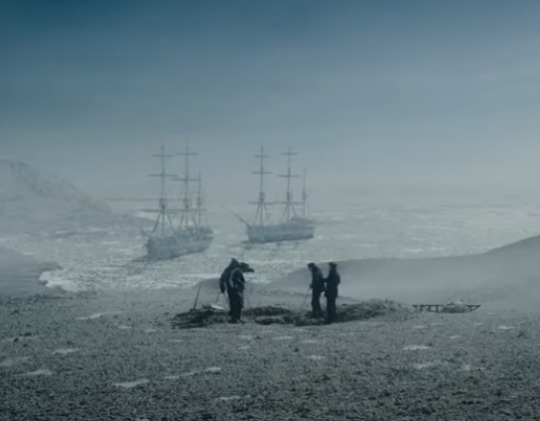
Location 2 - Ships September 1846 (70.25, -98.00)
Date: September 12th 1846
Nighttime - None
Daylight - 13h 45 min
Twilight - 10h 15 min
Sunset: 7:19 PM - Sunrise: 5:34 AM
Well, for this one, we need to use the extrapolation provided by the 1927's Admiralty map by tracing the line from where the ships were known to be in 1847 and 1848 (Point 5 and 6). (see point 3)


For Future Reference:
Travel Time between Loc 1 and Loc 2 - 7 days
Distance between Loc 1 and Loc 2 :70 NM / 80 Miles / 130 km
Average Travel Speed - 11.4 miles a day
Travel Condition - Ice breaking
DEATH COUNT: 2 + 3 (Total 5)
24 Officers and 100 Men remaining
Episode 2 - Gore
Location 3 - The Ships in 1847 (70.15, -98.30)
Date: May 24th 1847
Nighttime - None
Daylight - 24h min
Twilight - None
Sunset: N/A - Sunrise: N/A
Coordinates and Date From the Victory Point Note (see Point 1)

Location 4 - The Cairn (69.66, -98.27)
Date: May 28th 1847
Nighttime - None
Daylight - 24h min
Twilight - None
Sunset: N/A - Sunrise: N/A
From the ships, Gore lead his party to James Clark Ross' Cairn.
Now, in the Show, they found JCR's Cairn without an issue. In reality, while Gore had found the Cairn just fine, Crozier and Fitzjames did not. One of the reason for it is that JCR had, apparently, made a miscalculation in reporting where he had erected the Cairn by several miles. Honestly, the way that Fitzjames had written the words was so confusing, I appreciate that the show made the whole thing so much simpler, ahah. So let's say that it matches what we know now as Victory Point. Easy Peasy! (see Point 2)
To be Noted, we know the dates of departure from ships and arrival at cairn from the Victory Point Note.

Location 5 - The Ice Camp (69.665, -98.32)
Date: May 28th 1847
Nighttime - None
Daylight - 24h min
Twilight - None
Sunset: N/A - Sunrise: N/A
The Camp was raised just beyond the ice ridge that blocked the way form the shore and the Cairn was only a mile or so away. (see Point 3... hidden between point 2)
Of Note: That hail storm's cloud coverage was intense to say the least... So dark :')

Back to Loc 3 (70.15, -98.30)
Date: June 2nd 1847
Nighttime - None
Daylight - 24h min
Twilight - None
Sunset: N/A - Sunrise: N/A
Wednesday is a good day to drink with the Captain :D which makes it the Wednesday following May 28th 1847! So it's June 2nd!


For Future Reference:
Loc 2 to Loc 3
Travel time - 8 months, 12 days or 254 days
Travel Distance: 8.6 NM / 10 miles / 16 km
Average Travel Speed - 0.04 miles a day
Travel Condition - Pack drifting
Loc 3 to Loc 4/5
Travel time - 5 days
Travel Distance: 29 NM / 33.5 miles / 54 km
Average Travel Speed - 6.7 miles a day
Travel Condition - 6 Men hauling Sledge on Ice
Loc 4/5 Back to Loc 3
Travel time - 4 days
Travel Distance: 29 NM / 33.5 miles / 54 km
Average Travel Speed - 8.4 miles a day
Travel Condition - 6 Men hauling ASS and Sledge on Ice
DEATH COUNT: 1 (Total: 6)
23 Officers and 100 Men remaining
Episode 3 - The Ladder
This one is fun because, well... they're not moving! I could point out where Silna ends up but it looks like she remain close enough to the ships that it doesn't matter all that much. So, let's just make note of the date and events:
Location 3 - Ships in June 1847 (70.15, -98.30)
For the duration of the episode:
Nighttime - None
Daylight - 24h min
Twilight - None
Sunset: N/A - Sunrise: N/A
Date: between June 2nd and June 10th 1847
- Silna makes her igloo a few miles away from the Ships
Date: June 11th 1847
- Franklin Dies
- Crozier drafts his resignation letter
Date: June 12th 1847
- Franklin's leg is buried :')
- Lieutenant Fairholme is sent to KWI.
DEATH COUNT: 2 (Total: 8)
22 Officers and 99 Men remaining
Episode 4 - Punished, As a Boy
Another fun bottle Episode!
Location 3 - Ships in same approx position as June 1847 (70.15, -98.30)
Date: November 23rd 1847
Nighttime - 12h 35 min
Daylight - None
Twilight - 11h 25min
Sunset: 11:47 am - Sunrise: 10:51 am
- William Strong's birthday :)
- We know because it's the last sunrise of the year!
- Evans and Strong die :(
They searched for a long time if it was just before 4 pm when they got the alarm and then they came back in time for last sunrise at 11 am...

Date: November 24th 1847 to November 25th 1847
Nighttime - 12h 35 min
Daylight - None
Twilight - 11h 25min
Sunset: N/A - Sunrise: N/A
- Hickey has a communion with Tuunbaq (supposedly next day or so)
- Then Hickey gets evily booped.
DEATH COUNT: 2 + Hickey's postern (Total: 10)
22 Officers and 97 Men remaining
Episode 5 - First Shot the Winner, Lads
More fun in a bottle. These boys are not going far...
Honestly, for this one, the trouble was figuring out how much time had passed. For one, we know it's not yet Christmas because Christmas is, in fact, mentioned in Episode 6 (And Lady Jane's Christmas Pudding, hear hear) as part of the meeting between the officer and there was not yet a cooperation between the Terror Lts and Fitzjames for counting the supplies.
ALSO! That scene where Mr. Wentzell got killed dead over his nail... well, it gave me the feeling that either the review of the crew is not daily or that they've been on Erebus for a short time because 1) Fitzjames doesn't know their names and 2) He has to repeat the instructions about cleanliness... Perhaps they sent the Terrors in waves and not all 50 of them at once.
Other details to be mentionned:
Hickey is not recovered yet and Goodsir suspects he might reopen his wounds from working.
Goodsir has had time to be quite good at speaking inuktitut. Now, he could have had a continuous learning experience from Dr. McDonald since June 47 and before but considering that Dr. McDonald is stationed in Terror and Goodsir in Erebus, I suspect they did not have much time to have a class together...
Finally. Crozier suggests that he would be 2, perhaps, perhaps more... sick from sobering up. He got up just in time for First sunrise (Jan 17th).
So! We can infer that the episode might have spanned over 1 or 2 days (what's with the movement between the ships and the whole Rat Wedding).
My best guess is that the dates for this whole episode would be:
Date: December 14th 1847 to December 18th 1847
Nighttime - 13h 32 min
Daylight - None
Twilight - 11h 28min
Sunset: N/A - Sunrise: N/A
Why December 14th? Because it would be Edward Little's Birthday and I feel like it is appropriate for his character to have his boss send him back to the killing cold for more booze :') (December 16th to December 20th seems more likely but...)

This would give Crozier a full month to recover from sobering up and 22 days for Goodsir to learn inuktitut (impressive!), for Hickey backside to feel better and for Fitzjames to NOT learn the name of his new Terrors.
DEATH COUNT: 3 + Blanky's leg (Total: 13)
22 Officers and 94 Men remaining
That's it for now. I'll do the last 5 episodes soonish...
Conclusion to the first sets of episode: Sunsets and Sunrises were whacky in June 1847 but, so far, distance and travel times make good sense. If the accuracy holds up until episode 10, we might be able to have a pretty good idea of what, when and where everything happened in episodes 6 through 10.
#The Terror#The Terror AMC#Reference#The Terror Timeline#19th century dead sailors#At least now it's written somewhere that is not 120301923 word files...#Might need later editing#Super duper long post
42 notes
·
View notes
Text
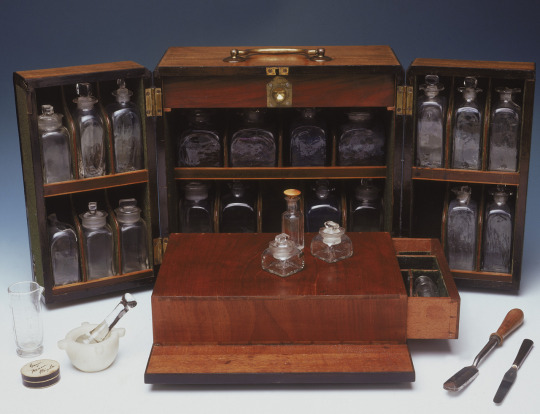
Naval Surgeon's medicine chest, belonging to surgeon Sir Benjamin F. Outram (1774-1856) and reputedly used at the battle of Copenhagen 1801
Outram was first employed in the naval medical service in 1794, and was promoted to the rank of surgeon in 1796. He served in HMS Harpy, HMS La Nymphe, and HMS Boadicea. He was surgeon in HMS Superb in the second battle of Algeciras, where Sir James Saumarez obtained a victory over the French and Spanish fleets on 12 July 1801. He received war medals and clasps for his services under Sir Richard Goodwin Keats. Then for a period he was surgeon to the royal yacht, HMS Royal Sovereign.
In 1806, with a view to private practice, Outram went to Edinburgh, and there graduated doctor of medicine on 24 June 1809. He was admitted a licentiate of the Royal College of Physicians of London on 16 April 1810, and then began as a physician at Hanover Square in London, where he lived more than 40 years. He acted as physician to the Welbeck Street Dispensary. On 3 May 1838 he was elected a fellow of the Royal Society; he also became an early member of the Royal Geographical Society.
In 1841 Outram became medical inspector of her Majesty's fleets and hospitals. He was appointed Knight Commander of the Order of the Bath (KCB) on 17 September 1850, and was admitted a fellow of the Royal College of Physicians on 9 July 1852. He died at Brighton on 16 February 1856, and was buried at Clifton, Bristol.
#naval history#naval artifacts#medicine chest#sir benjamin outram#battle of copenhagen#naval surgeon#early 19th century#age of sail#history
111 notes
·
View notes
Text

California at the Table

California off the Table
Literally just two outfits based on NorCal and SoCal
His Tattoos
His neck has a star based on the flag
A lot of plants because they are pretty
The Chinese saying, 是金子总会发光的, on his arm is the literally translation of Real gold never loses its shine or It's gold, it will always shine (I spoken to someone that knows Cantonese and Mandarin so they better have not been messing with me or else I will cry)
The eye with wings ties to California's religion past especially when it comes to cults
The sun card: fortune, happiness, joy and Harmony
Mayan Sun tattoo (not exactly one just a reference): life and knowledge
A lot of references to Chinese art work due the large history and population of Chinese people in California
The cactus with a sugar skull is based on the large history and population of Mexican people in California
Chinese Zodiac dog because California became the 31st state on September 9, 1850 which was the year of the dog
Bear with poppy because those are the national animal and flower
Another Mayan tattoo (not exactly one just reference): freedom and voyage
P.S: I didn't make some of these tattoos I mainly got ideas and changed them up a little bit
51 notes
·
View notes
Note
Has there ever been a time when we haven't had a vice president?
John Adams was sworn in as our first Vice President in 1789 and in the 234 years since then, we've gone without a VP for 37 years and 290 days.
Until the ratification of the Twenty-Fifth Amendment, there was no mechanism for filling a vacancy in the Vice Presidency, so in several instances we've gone almost entire Presidential terms without a Vice President.
7 Vice Presidents Died In Office:
•George Clinton (Jefferson's second VP & Madison's first VP), died April 20, 1812, leaving the Vice Presidency vacant for 318 days.
•Elbridge Gerry (Madison's second VP), died November 23, 1814, leaving a vacancy for 2 years, 101 days.
•William Rufus DeVane King (Pierce's VP), died April 18, 1853, leaving a vacancy for 3 years, 320 days.
•Henry Wilson (Grant's second VP), died November 22, 1875, leaving a vacancy for 1 year, 102 days.
•Thomas A. Hendricks (Cleveland's first VP), died November 24, 1885, leaving a vacancy for 3 years, 99 days.
•Garret A. Hobart (McKinley's first VP), died November 21, 1899, leaving a vacancy for 1 year, 103 days.
•James S. Sherman (Taft's VP), died October 30, 1912, leaving a vacancy for 125 days.
2 Vice Presidents Resigned:
•John C. Calhoun (VP under John Quincy Adams and Jackson's first VP), resigned on December 28, 1832, leaving a vacancy for 66 days.
•Spiro Agnew (Nixon's first VP), resigned on October 10, 1973, leaving a vacancy for 57 days.
9 Vice Presidents Succeeded to the Presidency:
•John Tyler (William Henry Harrison's VP), assumed office upon President Harrison's death on April 4, 1841, leaving a VP vacancy for 3 years, 333 days.
•Millard Fillmore (Taylor's VP), assumed office upon President Taylor's death on July 9, 1850, leaving a VP vacancy for 2 years, 238 days.
•Andrew Johnson (Lincoln's second VP), assumed office upon President Lincoln's death on April 15, 1865, leaving a VP vacancy for 3 years, 323 days.
•Chester Arthur (Garfield's VP), assumed office upon President Garfield's death on September 19, 1881, leaving a VP vacancy for 3 years, 166 days.
•Theodore Roosevelt (McKinley's second VP), assumed office upon President McKinley's death on September 14, 1901, leaving a VP vacancy for 3 years, 171 days.
•Calvin Coolidge (Harding's VP), assumed office upon President Harding's death on August 2, 1923, leaving a VP vacancy for 1 year, 214 days.
•Harry S. Truman (FDR's third VP), assumed office upon President Roosevelt's death on April 12, 1945, leaving a VP vacancy for 3 years, 283 days.
•Lyndon B. Johnson (JFK's VP), assumed office upon President Kennedy's death on November 22, 1963, leaving a VP vacancy for 1 year, 59 days.
•Gerald Ford (Nixon's second VP), assumed office upon President Nixon's resignation on August 9, 1974, leaving a VP vacancy for 132 days.
Only two Vice Presidential vacancies have been filled under the provisions of the 25th Amendment. Gerald Ford was appointed to the Vice Presidency by President Nixon following Spiro Agnew's resignation in October 1973 and was confirmed by Congress in December 1973 (a nominee to fill a Vice Presidential vacancy must be confirmed separately by a majority vote of both chambers of Congress). On August 9, 1974, Nixon resigned as President and Ford succeeded to the White House, leaving the Vice Presidency vacant for the second time in less than a year. President Ford nominated Nelson Rockefeller as Vice President on August 20 and he was confirmed by Congress in December 1974.
#History#Vice Presidency#Vice President of the United States#Vice Presidents#Vice Presidential Vacancies#Constitution#Twenty-Fifth Amendment#Vice Presidential nominees#VPs#VPOTUS#Vice Presidential History#Presidents#Presidency#Presidential History#Presidential Succession
33 notes
·
View notes
Text

Happy Birthday California! On September 9, 1850 California was admitted as the 31st state to the U.S.A. and as a free state as part of the Compromise of 1850. This poster is from the Semi-Centennial celebration published by Britton & Rey, Lith. From our online catalog.
29 notes
·
View notes
Text
Youjo Senki college AU part 3.
expanding on the backstories of the main characters.
Tanya:
Her parents were HS sweethearts that graduated in April 2001. But after the 9/11 attacks her father enlisted in the US military. He deployed in November 2002. Tanya's mother learned she was pregnant in January 2003. Tanya's father died during the invasion of Iraq, March 2003. Tanya's mother couldn't handle the heartbreak but carried on to give birth. Tanya was born on July 18th 2003. However, at two months old she was left at a church in Denver, Colorado without any documents on September 24th 2003 which is now her legal birthday.
Tanya grew up in the church orphanage until she turned 7 when she was then put into the foster care system. She spent many years moving from family to family until at age 12, she was adopted by Mr. and Mrs. Williams. Tanya was the fourth and youngest child in the household, her older adoptive siblings were the bio kids of Mr. and Mrs. Williams. Though not overtly abusive, they did neglect Tanya and overlooked the bullying she received from her adoptive siblings. Mr. and Mrs. Williams only did the bare minimum legally required of them.
Yet despite the bad circumstances, Tanya persevered and managed to graduate HS at 16. When Tanya turned 18, Mr. and Mrs. Williams kicked Tanya out once the government money stopped arriving. Tanya was expecting this though and had gotten a scholarship for college and moved into the dorms. But as a result of years of abuse, she's very slow to trust and has a food insecurity resulting in her hoarding food and constantly checking the kitchen.
tragic backstory over. Let's get to the good part. After starting college, Tanya really came into herself and found people she considers family. She's incredibly frugal and prefers wearing men's clothes since they're more durable and cheaper in the long run not to mention the functional pockets. Same with soap, Tanya uses men's 5 in 1 instead of buying many different hygiene products. As a result she's often mistaken as a young boy on first impression because of her androgynous looks, male clothing, and small stature.
Visha:
Visha is half White and half Mexican. Her mother, Natasha, is a Russian who moved to the US in 1992 shortly after the Soviet union fell. Her Father, Alejandro, and his family have lived in the Texas since 1850. While Natasha was attending college in Arizona she met and fell in love with Alejandro. They got married on his family ranch on August 16th 2000. Alejandro decided to take Natasha's last name of Serebryakov because he thought it was beautiful. Visha was born on February 5th 2001.
Growing up, Visha had a good childhood. She learned how to ride a horse, care for animals such as cats, dogs, cattle, and horses. Alejandro taught Visha how to be self-sufficient so she wouldn't need to rely on a man so she could truly get together with a man out of love and not necessity. Visha started working on her family ranch when she turned 16 and started to learn how to handle guns. Under parental supervision she practiced a lot and got pretty good.
That's when she discovered quick draw competitions and she fell in love with the sport. Her record is .38 seconds. When it came time for her to move out she decided to move to Colorado with her paternal grandparents to spend time with them while she attended college.
Weiss:
Matheus's father is German and his mother is American. His parents met when his mother was stationed in Germany during the late 90s, marrying in 1997. Matheus was born on July 26th 2000 in Pennsylvania. As a military brat he spent most of his childhood moving all over the world. It wasn't until HS when his family settled down in Colorado did he attended the same school for longer than a year.
After graduating HS in 2018 following his mother's footsteps he enlisted in the military much to her chagrin but also so he could get the government to pay for his college tuition. He did his job and performed well, however he was a bit too by the book and struggled with adapting. Though his contract was only for four years the government extended it by another year so he didn't get out till 2023.
Grantz:
Grantz was born on October 25th 2001. As the middle child he didn't get most of his parent's attention but he preferred that. His older brother was under a lot of pressure to set a good example so he was always busy and his younger sister was constantly making trouble. Grantz enjoyed being the "normal" one.
Some might consider Grantz's life boring but Grantz doesn't see it that way. He appreciates the privilege of having lived a secure life with a loving family. Grantz doesn't take for granted the hard work his parents put into giving himself and his siblings the best possible chance at life.
Neumann:
Born on July 21st, 2000 in a rough part of Albuquerque NM, Neumann grew up surrounded by hardship. But he didn't let that corrupt him. Growing up he loved helping people and protecting his classmates from bullies with his big size.
During HS he joined the wrestling team and did well. But he dropped out of HS at 17 to start working to help support his family. When working at a restaurant he discovered his love for cooking.
He studied hard to get a GED and saved money where he could so he could go to college. He finally saved enough money and moved to Denver Colorado to attend college there in 2022.
Koenig:
Born April 4th 2002 he grew up a loner, preferring to keep to himself. His parents also overworked and largely left him alone. His only real familial relationship growing up was with his paternal grandmother.
His grandmother's favorite movie was Mask of Zorro and Princess Bride. Watching these movies ignited his interest in fencing. While going to fencing classes he made friends who introduced him to anime. By HS his room was an odd mishmash of anime figurines and swords.
He decided to wait before starting college since he didn't know what he wanted to do. Then the pandemic happened and he stayed home 24/7 to act as his grandmother's live in caretaker to decrease external contact. In 2022 he started college and his grandma hired her own caretaker. Koenig still frequently visits and helps his grandma with her garden.
Factoids time. Tanya is the shortest of the friend group, standing at 5'1 (154cm for metric users). Visha is 5'7 (170cm). Grantz is 5'8 (172cm). Koenig is 5'11 (180cm). Weiss is 6'1 (185cm). And Neumann is the tallest at 6'4 (193cm).
Tanya is getting a business degree, Visha is getting an agriculture degree, Weiss is getting a history degree, Neumann is getting a culinary degree, and Koenig is getting a computer degree.
9 notes
·
View notes
Photo










California was admitted as the thirty-first U.S. state on September 9, 1850.
#San Francisco#California#31st US State#9 September 1850#Pacific Ocean#original photography#summer 2020#Sonoma#vineyard#Sierra Nevada#Yosemite National Park#Morro Bay#Morro Rock#Big Sur#Napa Valley#Beringer Vineyards#San Diego#Balboa Park#Los Angeles#Humboldt Redwoods State Park#Mussel Rock Beach#Daly City
1 note
·
View note
Text

The Fugitive Slave Law was enacted by Congress in September, 1850, received the signature of Howell Cobb, of Georgia, as Speaker of the House of Representatives, of William R. King, of Alabama, as President of the Senate, and was “approved,” September 18th, of that year, by Millard Fillmore, Acting President of the United States.
The authorship of the Bill is generally ascribed to James M. Mason, Senator from Virginia. Before proceeding to the principal object of this tract, it is proper to give a synopsis of the Act itself, which was well called, by the New York Evening Post, “An Act for the Encouragement of Kidnapping.”
SYNOPSIS OF THE LAW
Section 1. United States Commissioners “authorized and required to exercise and discharge all the powers and duties conferred by this act.”
Section. 2. Commissioners for the Territories to be appointed by the Superior Court of the same.
Section. 3. United States Circuit Courts, and Superior Courts of Territories, required to enlarge the number of Commissioners, “with a view to afford reasonable facilities to reclaim fugitives from labor,”.
Section. 4. Commissioners put on the same footing with Judges of the United States Courts, with regard to enforcing the Law and its penalties.
Section. 5. United States Marshals and deputy marshals, who may refuse to act under the Law, to be fined One Thousand dollars, to the use of the claimant. If a fugitive escape from the custody of the Marshal, the Marshal to be liable for his full value. Commissioners authorized to appoint special officers, and to call out the posse comitatus.
Section. 6. The claimant of any fugitive slave, or his attorney, “may pursue and reclaim such fugitive person,” either by procuring a warrant from some judge or commissioner, “or by seizing and arresting such fugitive, where the same can be done without process;” to take such fugitive before such judge or commissioner, “whose duty it shall be to hear and determine the case of such claimant in a summary manner,” and, if satisfied of the identity of the prisoner, to grant a certificate to said claimant to “remove such fugitive person back to the State or Territory from whence he or she may have escaped,”using “such reasonable force or restraint as may be necessary under the circumstances of the case.” “In no trial or hearing under this act shall the testimony of such alleged fugitive be admitted in evidence.” All molestation of the claimant, in the removal of his slave, “by any process issued by any court, judge, magistrate, or other person whomsoever,” to be prevented.
Section. 7. Any person obstructing the arrest of a fugitive, or attempting his or her rescue, or aiding him or her to escape, or harboring and concealing a fugitive, knowing him to be such, shall be subject to a fine of not exceeding one thousand dollars, and to be imprisoned not exceeding six months, and shall also “forfeit and pay the sum of one thousand dollars for each fugitive so lost.”
Section. 8. Marshals, deputies, clerks, and special officers to receive usual fees; Commissioners to receive ten dollars, if fugitive is given up to claimant; otherwise, five dollars; to be paid by claimant.
Section. 9. If claimant make affidavit that he fears a rescue of such fugitive from his possession, the officer making the arrest to retain him in custody, and “to remove him to the State whence he fled.” Said officer “to employ so many persons as he may deem necessary.” All, while so employed, be paid out of the Treasury of the United States.
Section. 10. [This Section provides an additional and wholly distinct method for the capture of a fugitive; and, it may be added, one of the loosest and most extraordinary that ever appeared on the pages of Statute book.] Any person, from whom one held to service or labor has escaped, upon making “satisfactory proof” of such escape before any court of record, or judge thereof in vacationa record of matter so proved shall be made by such court, or judge, and also a description of the person escaping, “with such convenient certainty as may be;”a copy of which record, duly attested, “being produced in any other State, Territory, or District,” and “being exhibited to any judge, commissioner, or other officer authorized,”. “shall be held and taken to be full and conclusive evidence of the fact of escape, and that the service or labor of the person escaping is due to the party in such record mentioned;” when, on satisfactory proof of identity, “he or she shall be delivered up to the claimant.” “Provided, That nothing herein contained shall be construed as requiring the production of a transcript of such record as evidence as aforesaid; but in its absence, the claim shall be heard and determined upon other satisfactory proofs competent in law.”
#The Fugitive Slave Law#RACISM#white hate#racism in the us#slavery#An Act for the Encouragement of Kidnapping#ilegal kidnap of free people#Black Lives Matter#white lies#white history matters#slave catchers#police origins#kidnappers#watchmen
3 notes
·
View notes
Text

US postage stamp, 2000
“California Statehood"
Scott #3438
Issued: September 8, 2000 - Sacramento, CA
Quantity: 53,000,000
Designer: Carl Herrman
Printed By: Avery Dennison (Photogravure)
California was admitted to the Union on September 9, 1850, as the 31st state.
#stamp#mail#stamps#stamp collecting#postage#usps#stamp collection#postage stamps#philately#philatelic#california
6 notes
·
View notes
Text

Biden reacts to the GOP's proposal to gut social security
* * * * *
LETTERS FROM AN AMERICAN
March 21, 2024
HEATHER COX RICHARDSON
MAR 22, 2024
In the past few weeks, Josh Kovensky of Talking Points Memo has deepened our understanding of the right-wing attempt to impose Christian nationalism on the United States through support for Trump and the MAGA movement. On March 9, Kovensky explored the secret, men-only, right-wing society called the Society for American Civic Renewal (SACR), whose well-positioned, wealthy, white leaders call for instituting white male domination and their version of Christianity in the U.S. after a “regime” change.
On March 19, Kovensky explained how that power was reaching into lawmaking when he reported on a September 2023 speech by Russ Vought, a key architect of the plans for Trump’s second term, including Project 2025. In the speech, which took place in the Dirksen Senate Office Building, Vought explained the right wing’s extreme border policies by explicitly marrying Christian nationalism and an aversion to the pluralism that is a hallmark of American democracy. Vought argued that the U.S. should model immigration on the Bible’s Old Testament, welcoming migrants only “so long as they accepted Israel’s God, laws, and understanding of history.”
These religious appeals against the equality of women and minorities seem an odd juxtaposition to a statement by United Auto Workers (UAW) union president Shawn Fain in response to the claim of the Trump campaign that Trump’s “bloodbath” statement of last Saturday was about the auto industry. Fain is also a self-described Christian, but he rejects the right-wing movement.
“Donald Trump can’t run from the facts,” Fain said in a statement to CBS News. “He can do all the name-calling he wants, but the truth is he is a con man who has been directly part of the problem we have seen over the past 40 years—where working class people have gone backward and billionaires like Donald Trump reap all the benefits….
“Trump has been a player in the class war against the working class for decades, whether screwing workers and small businesses in his dealings, exploiting workers at his Mar a Lago estate and properties, blaming workers for the Great Recession, or giving tax breaks to the rich. The bottom line is Trump only represents the billionaire class and he doesn’t give a damn about the plight of working class people, union or not.”
In the 1850s the United States saw a similar juxtaposition, with elite southern enslavers heightening their insistence that enslavement was sanctioned by God and their warnings that the freedom of Black Americans posed an existential threat to the United States just as white workers were beginning to turn against the system that had concentrated great wealth among a very few men. While white southern leaders were upset by the extraordinary popularity of Harriet Beecher Stowe’s Uncle Tom’s Cabin, the 1852 novel that urged middle-class women to stand up against slavery, it was Hinton Rowan Helper’s 1857 The Impending Crisis of the South: How to Meet It that made them apoplectic.
Hinton Helper was a white southerner himself and showed no abolitionist sympathies in his deeply racist book. What that book did was to show, using the statistics that had recently been made available from the 1850 census, that the American South was falling rapidly behind the North economically. Helper blamed the system of slavery for that economic backwardness, and he urged ordinary white men to overthrow the system of enslavement that served only a few wealthy white men. The cotton boom of the 1850s had created enormous fortunes for a few lucky planters, as well as a market for Helper’s book among poorer white men who had been forced off their land.
White southern elites considered Helper’s book so incendiary that state legislatures made it illegal to possess a copy, people were imprisoned and three allegedly hanged for being found with the book, and a fight over it consumed Congress for two months from December 1859 through January 1860. The determination of southern elites to preserve their power made them redouble their efforts to appeal to voters through religion and racism.
In today’s America, the right wing seems to be echoing its antebellum predecessors. It is attacking women’s rights; diversity, equity, and inclusion programs; immigration; LGBTQ+ rights and so on. At the same time, it continues to push an economic system that has moved as much as $50 trillion from the bottom 90% to the top 10% since 1981 while exploding the annual budget deficit and the national debt.
Yesterday the far-right Republican Study Committee (RSC), which includes about two thirds of all House Republicans, released a 2025 budget plan to stand against Biden’s 2025 budget wish list. The RSC plan calls for dramatic cuts to business regulation, Social Security, Medicaid, and so on, and dismisses Biden’s plan for higher taxes on the wealthy, calling instead for more than $5 trillion in tax cuts. It calls the provision of the Inflation Reduction Act that permits the government to negotiate with pharmaceutical companies over prices “socialist price controls.”
Biden responded to the RSC budget, saying: “My budget represents a different future. One where the days of trickle-down economics are over and the wealthy and biggest corporations no longer get all the breaks. A future where we restore the right to choose and protect other freedoms, not take them away. A future where the middle class finally has a fair shot, and we protect Social Security so the working people who built this country can retire with dignity. I see a future for all Americans and I will never stop fighting for that future.”
Biden’s version of America has built a strong economy in the last two years, with extremely low unemployment, extraordinary growth, and real wage increases for all but the top 20%. Inequality has decreased. Today the White House announced the cancellation of nearly $6 billion in federal student loan debt for thousands of teachers, firefighters, and nurses. Simply by enforcing laws already on the books that allow debt forgiveness for borrowers who go into public service, the administration has erased nearly $144 billion of debt for about 4 million borrowers.
At the same time, the administration has reined in corporations. Today the Department of Justice, along with 15 states and the District of Columbia, sued Apple, Inc., for violating the 1890 Sherman Antitrust Act. They charge that the company, which in 2023 had net revenues of $383 billion and a net income of $97 billion, has illegally established a monopoly over the smartphone market to extract as much revenue as possible from consumers. The company’s behavior also hurts developers, the Department of Justice says, because they cannot compete under the rules that Apple has set.
At the end of February, the Federal Trade Commission (FTC) sued to block the merger of Kroger and Albertsons, a $24.6 billion takeover affecting 5,000 supermarkets and 700,000 workers across 48 states. The merger would raise grocery prices, narrow consumer choice, and hurt workers’ bargaining power, the FTC said. The attorneys general of Arizona, California, the District of Columbia, Illinois, Maryland, Nevada, New Mexico, Oregon and Wyoming joined the FTC’s lawsuit.
The benefits of the administration’s reworking of the government for ordinary Americans have not gotten traction in the past few years, as right-wing media have continued to insist that Biden’s policies will destroy the economy. But as Shawn Fain’s position suggests, ordinary white men, who fueled the Reagan Revolution in 1980 when they turned against the Democrats and who have made up a key part of the Republican base, might be paying attention.
In June 2023 the AFL-CIO, a union with more than 12.5 million members, endorsed Biden for president in 2024 in its earliest endorsement ever. In January the UAW also endorsed Biden. Yesterday the United Steelworkers Union, which represents 850,000 workers in metals, mining, rubber, and other industries, added their endorsement.
Just as it was in the 1850s, the right-wing emphasis on religion and opposition to a modern multicultural America today is deeply entwined with preserving an economic power structure that has benefited a small minority. That emphasis is growing stronger in the face of the administration’s effort to restore a level economic playing field. In the 1850s, those who opposed the domination of elite enslavers could only promise voters a better future. But in 2024, the success of Biden’s policies may be changing the game.
LETTERS FROM AN AMERICAN
HEATHER COX RICHARDSON
#Biden#Biden White House#Social Security#GOP Budget#RSC#Republican Study Committee#Christian Nationalism#AFL-CIO#unions#antebellum american#history#Heather Cox Richardson#Letters From An American#ACSR#American Civic Renewal#Project 2025
4 notes
·
View notes
Text
Amos Fuller - Earning a Living
Amos Fuller is my 2nd great-grandfather (Ahnentafel #26). He was born in Alabama between 1847 and 1850 of Alabama parentage.
The earliest record found for Amos Fuller is the 1870 U. S. Census. He is listed as “Ames” Fuller, a twenty-three year old black male, born in Alabama. His occupation is given as “St.Bt.L???.[1] This abbreviation at first glance is rather cryptic. Ancestry transcribed the occupation as “St Bt Land”. Additional research on Amos’ occupations suggest that “St. Bt.” stands for steam boat.
I was able to trace Amos consistently through the Mobile City directories. He first appears in the directory in 1877 with the occupation of “laborer”. Amos is also classified as a laborer in the 1879 and 1880 directories. [2] The 1880 U. S. Census gives Amos Fuller’s occupation as stevedore. This is a dock worker who loads and unloads ships in port.[3]
In the 1884 Mobile City directory, Amos Fuller is listed as a steamboat hand.[4] This means that he was employed by a steamboat as part of the crew. Deckhands made up the bulk of the crew. Most of the deckhands were immigrants and freedmen. Their job was to load and unload cargo transported on the steamboat. Deckhands worked almost 24/7, bunked with the cargo and were paid low wages.[5]
Amos Fuller had a change of occupation as noted in the 1885-1886 and 1887 Mobile City directories. He is listed as “fireman Mobile ice Factory.”[6] Contrary to our popular image of a fireman, Amos was not putting out fires, he was stoking up fires. A fireman’s job was to shovel coal or wood into a boiler to keep it running.[7] Ice factories of the late 1880s used steam engine powered pumps which were integral in the process of making ice.[8]
For the next several years, Amos Fuller was listed in the Mobile City directories as a laborer.
In the 1894 Mobile City directory Amos was listed with the occupation of “fireman stbt D. L. Tally.”[9] Steamboat firemen reported to the engineer. The fireman’s job was to stoke the boiler to keep the steam engine running. They shoveled coal all day, hour after hour. Not only was this a strenuous job, it was also dangerous. If a boiler exploded the fireman would be the first to die. [10]
The steamer D. L. Tally was a packet boat based in Mobile, Alabama. It traveled the Alabama River carrying freight, mail and passengers.

“The Steamer D. L. Tally,” The Monroe Journal (Claiborne, Alabama), 18 October 1894, p. 2, col. 4, Newspapers.com (https://www.newspapers.com/image/244603449 : accessed 7 February 2024).
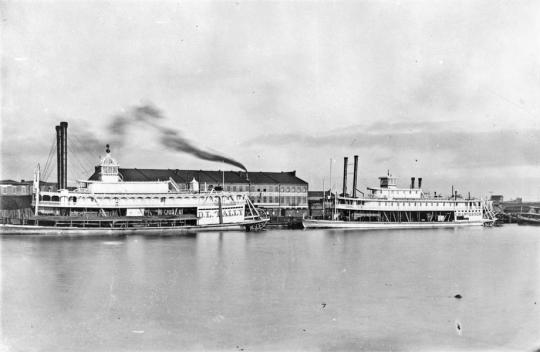
Image: Left to Right: D. L. Tally; sternwheel C. W. Anderson, n.d., black and white photographic print. From the Collection, UW-La Crosse Historic Steamboat Photographs. Used with written permission of Murphy Library Special Collections / ARC, University of Wisconsin-La Crosse.

Image: D. L. Tally (Packet, 1870-1895), n.d., black and white photographic print. From the Collection, UW-La Crosse Historic Steamboat Photographs. Used with written permission of Murphy Library Special Collections / ARC, University of Wisconsin-La Crosse.
In the 1900 Mobile City Directory, Amos had the following listing: “Fuller Amos, c, stbtmn, res 252 Lipscomb.”[11] This was the last time his occupation was specified as a steamboat man.
Amos Fuller died on 4 September 1909 of pulmonary tuberculosis.[12] One wonders if his exposure to coal dust had any relationship to the tuberculosis.
Sources
1870 U.S. census, Mobile County, Alabama, population schedule, Mobile Ward 8, p. 36, dwelling 257, family 257, Ames Fuller; digital images, FamilySearch (https://www.familysearch.org/ark:/61903/3:1:S3HT-6FZ9-M5B : accessed 17 April 2021); microfilm 545530/digital 4257608 > image 673 of 818; citing National Archives and Records Administration microfilm M593, roll 31.
Henry Farrow & Co's Mobile City Directory For the Year 1877, (Mobile: Henry Farrow & Co., 1876), 76, entry for "Fuller Amos"; also subsequent years with varying titles, specifically (1878) 68 and (1880) 69; imaged in “U.S., City Directories,” Ancestry (https://www.ancestry.com : accessed 15 September 2017).
1880 U.S. census, Mobile County, Alabama, population schedule, Mobile, enumeration district (ED) 140, p. 21 (written), 367A (stamped), dwelling 189, family 190, Amos Fuller household; digital images, FamilySearch (https://www.familysearch.org/ark:/61903/3:1:33SQ-GYYL-HRT : accessed 13 September 2017) microfilm 1254025 / digital 5157243 > image 459 of 791; citing National Archives and Records Administration microfilm T9, roll 25.
George Matzenger’s Mobile Directory For The Year 1884, Volume XX (Mobile: George Matzenger, 1884), 104, entry for ”Fuller Amos”; imaged in “U.S., City Directories, 1822-1995,” Ancestry (https://www.ancestry.com : accessed 6 February 2024) > Alabama > Mobile > 1884 > Mobile, Alabama, City Directory, 1884 > image 55 of 215.
“Steamboat Heroine: The Crew of a Western Steamboat,” Oklahoma Historical Society (https://www.okhistory.org/learn/steamboat4 : accessed 7 February 2024).
George Matzenger’s Mobile Directory For 1885-6 (Mobile: George Matzenger, 1885), 100, entry for “Fuller Amos”; also the subsequent year (1887) 113; imaged in “U.S., City Directories,” Ancestry (https://www.ancestry.com : accessed 15 September 2017).
Wikipedia contributors, "Fireman (steam engine)," Wikipedia, The Free Encyclopedia (https://en.wikipedia.org/w/index.php?title=Fireman_(steam_engine)&oldid=1187171257 : accessed February 4, 2024).
"When Steam Brought Cold, and Fire Made Ice," blog post, Hometown by Handlebar, posted 14 July 2022 (https://hometownbyhandlebar.com : accessed 4 February 2024).
George Matzenger’s Mobile Directory For 1894, Volume XXIX (Mobile: George Matzenger, 1894), 122, entry for “Fuller Amos”; imaged in "U.S., City Directories, 1822-1995," Ancestry (https://www.ancestry.com : accessed 6 February 2024) > Alabama > Mobile > 1894 > Mobile, Alabama, City Directory, 1894 > image 72 of 273.
“Steamboat Heroine: The Crew of a Western Steamboat.”
George Matzenger’s Mobile Directory For 1900, Volume XXXV (Mobile: George Matzenger, 1900), 149, entry for “Fuller Amos”; imaged in "U.S., City Directories, 1822-1995," Ancestry (https://www.ancestry.com : accessed 6 February 2024) > Alabama > Mobile > 1900 >Mobile, Alabama, City Directory, 1900 > image 80 of 322.
Alabama Department of Health, death certificate no. 147 (1909), Amos Fuller, d. 4 September 1909, Mobile; digital image, "Alabama Deaths, 1908-1974," FamilySearch (https://www.familysearch.org : accessed 16 August 2022). This image is only viewable at a family history center or affiliate library.
2 notes
·
View notes
Text
The Religion of Ancient Greece by J. E. Harrison


The Religion of Ancient Greece
The Religion of Ancient Greece by J. E. Harrison. The Religion of Ancient Greece is an inquiry into the nature of Greek religion ; an attempt to discover its origin how it resembles and how it differs from other religions. Especially its object is to ask and, if it may be, to answer the question : " What in Greek religion is characteristically Greek ?"
From the book:
"Plato says that the earliest inhabitants of Greece, like many of the barbarians, had for their gods the sun, moon, earth, the stars, and heaven, and that these were called gods because they were always 'running about' (theein = run). His statement as to the existence of these primitive gods is instructive, though his etymology is only amusing. The word for gods, 'theoi,' is more probably merely a variation of a root, meaning, in the different derivatives, 'prayer,' 'spell,' 'sacred,' or 'taboo' (festus). The theos is the being at the back of these magical or religious processes; the being whose existence is implied by them; the sanction of the prayer, the spell, the curse, the taboo. The study of comparative religion shows that man does not at the outset attribute complete personality to the things he worships. Personality comes with the giving of human or animal form. Before complete impersonation, we have 'animism,' when the gods are intangible Things, powerful but not personal, dwelling anywhere, everywhere. These Things are scarcely, in our sense, gods; but they become gods when man enters into relation with them, localizes them, fixes them by some form of worship."
This book was first published London in 1913, download it here:

The religion of ancient Greece (1913)
You can buy the print version here: Link
About the author J. E. Harrison
J. E. Harrison, whose full name is Jane Ellen Harrison, was a prominent British classical scholar and linguist. She was born on September 9, 1850, and died on April 15, 1928. Jane Ellen Harrison is best known for her work in the fields of classical studies, archaeology, and anthropology, particularly her research on ancient Greek religion, mythology, and art.
One of her most influential works is the book titled "Prolegomena to the Study of Greek Religion," published in 1903. In this book, Harrison explored the origins and development of Greek religious beliefs and practices, emphasizing the role of rituals and symbolism in ancient Greek religion. Her work contributed significantly to the understanding of the connections between ancient Greek art, mythology, and religion.
Harrison's approach to studying religion and mythology was groundbreaking for her time. She applied anthropological and sociological methods to the study of ancient cultures, offering new perspectives on the significance of rituals, symbols, and the evolution of religious thought.
Overall, Jane Ellen Harrison is remembered as a pioneering figure in the study of classical antiquity, and her writings continue to be influential in the fields of classics and religious studies.
Read the full article
2 notes
·
View notes